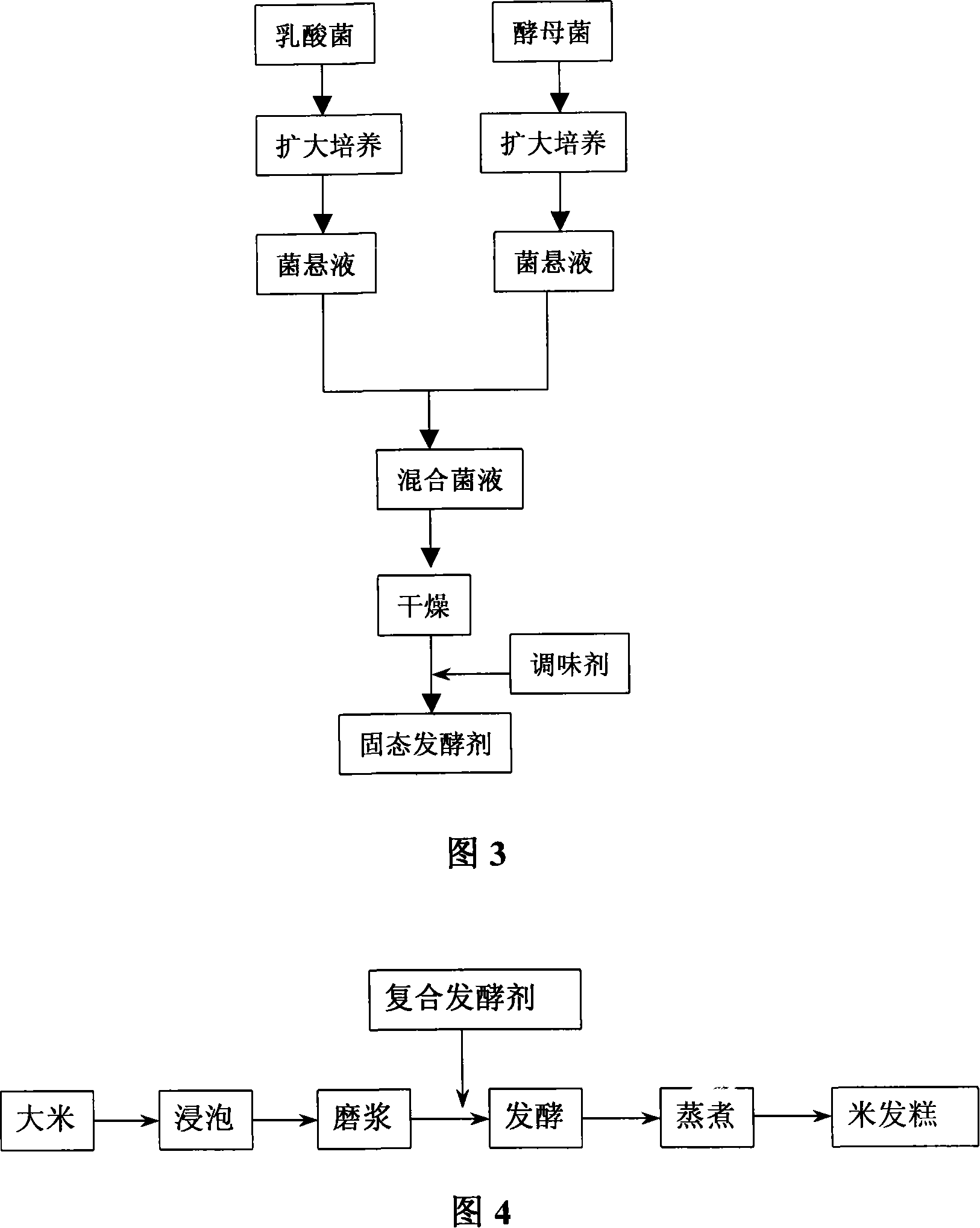Mycopremna as microorganism leaven, composite leaven containing the mycopremna and application of the same
A microbial starter and composite starter technology, applied in the direction of microorganism-based methods, microorganisms, applications, etc., to achieve good shape, good for freshness preservation, and good fermentation characteristics
- Summary
- Abstract
- Description
- Claims
- Application Information
AI Technical Summary
Problems solved by technology
Method used
Image
Examples
Embodiment 1
[0028] Embodiment 1: Isolation, screening and identification of strains
[0029] 1. Separation medium: preparation of potato dextrose agar medium
[0030] Weigh 200g of peeled fresh potatoes by weight, slice them, add 1000mL of water, boil for 30min, add 20g of glucose and 7.5g of agar powder after filtering, add water to 1000mL after boiling, adjust pH to 6.0-6.5, conventional method (121℃ , sterilization for 30 minutes) sterilization.
[0031] 2. Separation method (dilution plate method)
[0032] 2.1 Preparation of sample diluent:
[0033] Use a 1ml sterile pipette to draw 1ml of the enriched culture solution, put it into a test tube filled with 9ml of sterile water, oscillate and mix well and serve as 10 -1 diluent; then use a 1ml sterile pipette to draw 10 -1 Put 1ml of the diluent into a test tube filled with 9ml of sterile water, blow and suck three times, let the bacteria solution mix evenly, and serve as 10 -2 Diluent; change another sterile pipette to draw 10 -2...
Embodiment 2
[0046] The preparation of embodiment 2 liquid composite fermentation agent (microbial agent)
[0047] 1. Test materials: Brettanomyces castellum ZSM-001, which was isolated and screened from rice milk fermented liquid, the raw material of rice cake; Lactobacillus plantarum AS1.510, purchased from the Institute of Microbiology, Chinese Academy of Sciences; early indica rice is commercially available product.
[0048] 2. Production of liquid compound starter
[0049] 1) Cultivation of strains in inclined test tubes: Inoculate Brettanomyces castellum ZSM-001 with the preservation number of CCTCC NO: M207150 and commercially available Lactobacillus plantarum AS1.510 on yeast dextrose-peptone potato agar medium ( Translated by Hu Ruiqing, Yeast Characteristics and Identification Manual, Qingdao Ocean University Press, 1991. The medium was adjusted to pH 6.0 before sterilization) and MRS medium (Edited by Ling Daiwen, Lactic Acid Bacteria Classification Identification and Experimen...
Embodiment 3
[0079] The preparation of embodiment 3 solid-state composite leavening agent (microbial agent)
[0080] 1. Test material
[0081] The test strains were Brettanomyces castellus ZSM-001 and Lactobacillus plantarum AS1.510, and early indica rice was a commercially available product (same as Example 2).
[0082] 2. Production of solid-state compound starter
[0083] 1) Cultivation of strains in inclined test tubes: inoculate Brettanomyces castellum ZSM-001 with the preservation number of CCTCC NO: M207150 and commercially available Lactobacillus plantarum AS1.510 into yeast glucose sterilized by the aforementioned conventional method. Peptone Potato Agar Medium (translated by Hu Ruiqing, Handbook of Characterization and Identification of Yeast, Qingdao Ocean University Press, 1991, the pH of the medium was adjusted to about 6.0 before sterilization) and MRS medium (edited by Ling Daiwen, classification and identification of lactic acid bacteria And the experimental method, China...
PUM
 Login to View More
Login to View More Abstract
Description
Claims
Application Information
 Login to View More
Login to View More - R&D
- Intellectual Property
- Life Sciences
- Materials
- Tech Scout
- Unparalleled Data Quality
- Higher Quality Content
- 60% Fewer Hallucinations
Browse by: Latest US Patents, China's latest patents, Technical Efficacy Thesaurus, Application Domain, Technology Topic, Popular Technical Reports.
© 2025 PatSnap. All rights reserved.Legal|Privacy policy|Modern Slavery Act Transparency Statement|Sitemap|About US| Contact US: help@patsnap.com


